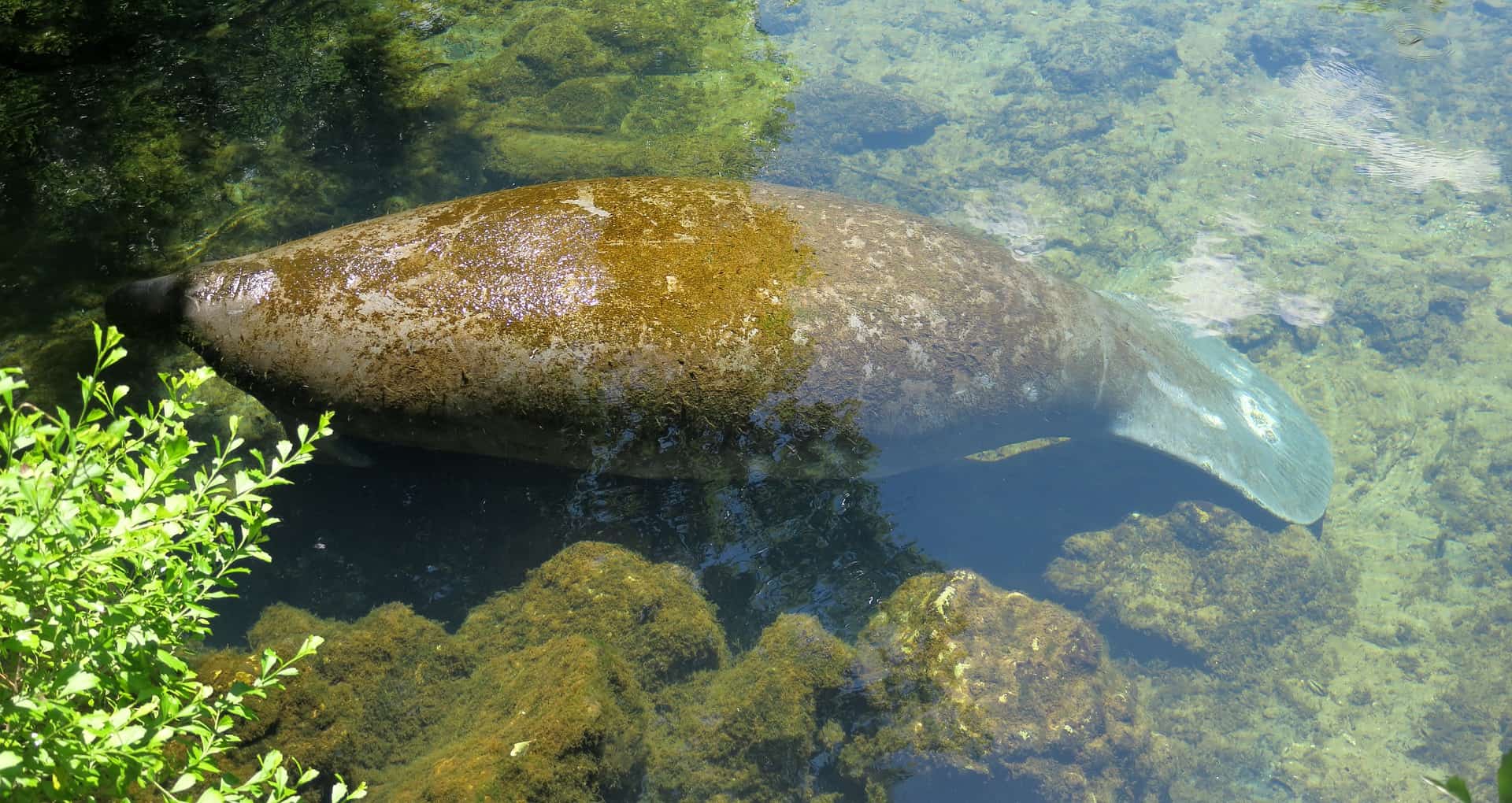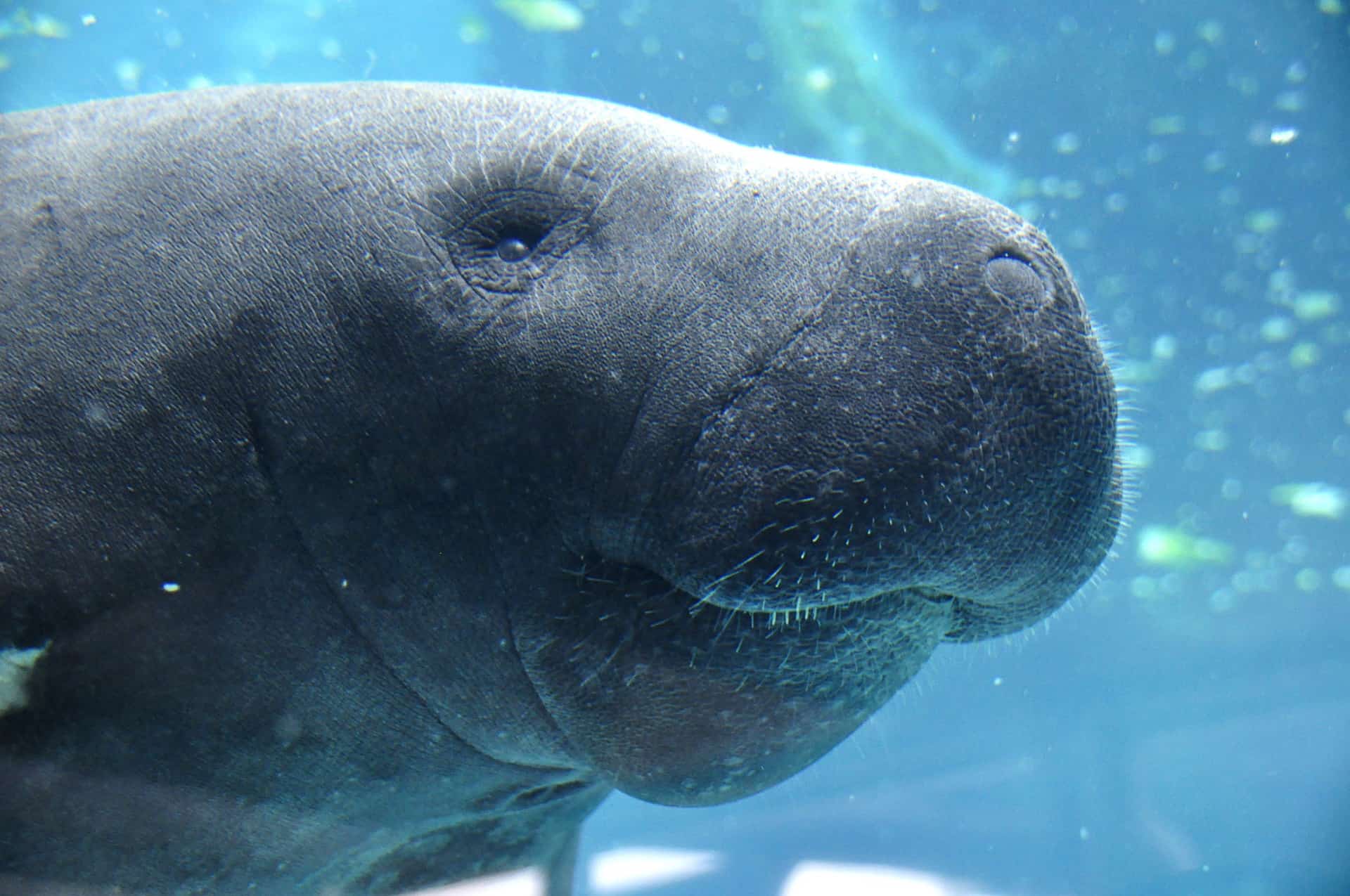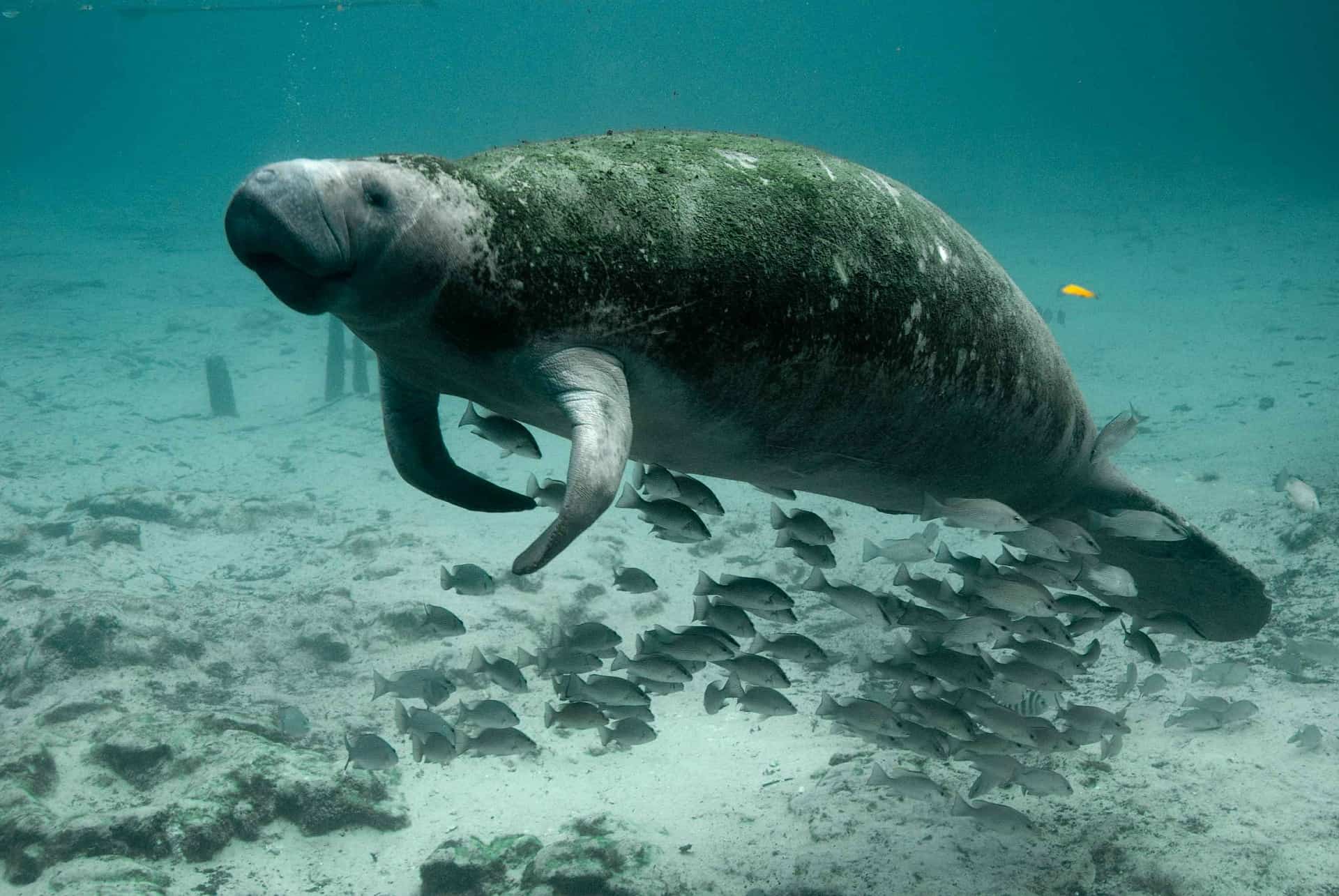
Do you know enough manatee facts to keep yourself away from these aquatic mammals while swimming in shallow waters? No? Then, you should check out our concise list of manatee facts before your next swimming trip!
Before you read our manatee facts list, let’s discuss the importance of these gentle giants. Also known as sea cows, manatees aim to live peaceful lives in warm shallow waters. Some may consider them ugly but, ancient explorers thought manatees resembled the mythological description of mermaids.
If you’re off to surf or swim near shallow coastal waters, you must avoid interacting with manatees at all costs. Remember that the gentleness of these sea cows doesn’t serve as a welcome to interactions. They may not be territorial but their friendliness might cost you up to 6 months in jail. Curious to learn more? Read on and see more details about the manatee facts we mentioned.
- Adult manatees graze for up to 8 hours every day.
- Fully-grown manatees weigh around 1,300 lbs or 590 kg.
- Using their powerful tails, manatees swim underwater for 3 mph or 5 mph and speed up to 32 km/ph when in danger.
- Their average lifespan lasts around 40-60 years.
- Manatees grow as large as 10 feet or 3 meters.
- Manatees belong to the family Trichechidae with the scientific name Trichechus.
- Because of their similar features and habitat, manatees often get mistaken as Dugongs (Dugong dugon).
- Baby manatees learn to swim on their own around an hour after their birth.
- Manatees are closely related to the species of elephants and aardvarks.
- Mother manatees give birth to their calves underwater.
- Sea cows only make sounds when socializing, sexual intercourse, or in danger.
- Like most aquatic mammals, manatees catch a breath of air from the surface every three or four minutes while swimming.
- Despite their poor eyesight, sea cows still manage to find their food using their sensitive thin hair.
- Like their fellow mammals, manatees grow hair, are warm-blooded, and feed their calves milk.
- As lifetime herbivores, these large aquatic mammals consume mainly underwater vegetation.
- Though usually unseen, manatees have five fingers and noticeable fingernails.
- Manatee brains are smooth.
- Experts call baby manatees “calves.”
- Some experts believe that manatees can distinguish different colors.
- Considered as semi-social animals, you’ll rarely see a manatee hanging out with a large group.
You can find the habitat of manatees around shallow coastal areas and rivers.
One of the most common manatee facts revolves around their choice of habitat. Manatees prefer to swim alone in warm waters located at the Caribbean Sea, the Amazon basin, West Africa, and the Gulf of Mexico. They also find it comfortable swimming slowly in canals, estuaries, and saltwater bays. Later on, we’ll discuss why manatees can only live in warm waters.
The three species of manatees can be determined depending on where they live.
Some of the most unfamiliar manatee facts center on the marine mammals’ group and species. Most people believe that sea cows don’t have differences since they all look alike. However, they actually belong to the family Trichechidae that is divided into three species and two subspecies. You can base each species’ location on their names.
The Amazonian manatee (Trichechus inunguis) resides in the Amazon basin, while the West African manatee (Trichechus senegalensis) swims around the waters of West Africa. Elsewhere, the West Indian manatee (Trichechus manatus) consists of two subspecies, the Florida manatee (Trichechus manatus latirostris) and the Antillean manatee (Trichechus manatus manatus).
Beware the Florida Manatee Sanctuary Act of 1978 before you decide to touch a sea cow.
When composing a list of manatee facts, you must always include the various laws protecting these gentle giants. The International Union for Conservation of Nature indicated manatees as “vulnerable” under their Red List. In Florida, touching manatees can get you thrown in jail for 6 months because of the Florida Manatee Sanctuary Act of 1978. Other federal laws protecting manatees include the Marine Mammal Protection Act of 1972 and the Endangered Species Act of 1973.
These marine mammals usually like sleeping upside down.
After spending hours grazing underwater vegetation, manatees rest and sleep by suspending themselves upside down. They do this due to their absence of gills that help other aquatic animals breathe underwater. By sleeping upside down, manatees can sleep and breathe with ease. Since this usually happens at around noon, passing swimmers, surfers, or sailors commonly find these gentle giants sound asleep with their bodies positioned upside down. While in this state, manatees keep their brains active with unihemispheric sleep.

Experts dub manatees as one of the most wholesome and harmless animals in the world.
Among all the manatee facts on our list, everyone knows the wholesomeness of these adorable sea cows. While capybaras and quokkas bite some people they encounter, manatees do not attack any creatures they bump into underwater. Because of their friendly nature, some accredited centers and snorkel tours include the rare experience of swimming with manatees.
These gentle giants cannot use their teeth for biting or holding other animals.
The teeth of manatees fascinate various experts due to their unique formation. Sea cows only have hind molars that they use for grazing. Their unusual molars make them incapable of hurting any other creature they might encounter. If they happen to bite your hand, you can easily pull yourself free.
Despite living in similar habitats, alligators do not prey on manatees.
One of the most shocking manatee facts from our list centers on the supposed acquaintanceship of manatees and alligators. The two very different animals usually lazing around in the same areas with shallow warm waters. Despite being known as aggressive predators, alligators do not prey on sea cows due to their large size, thick hides, and fast swimming when sensing danger nearby. They also give the marine mammals the right of way in the water.
Manatees have excellent long-term memory skills.
Due to the lack of smoothness of manatee brains, these marine mammals are capable of gaining high intelligence and long-term memory skills. Because of this, the training methods of waterpark trainers on dolphins and seals can be effective on manatees.
Aside from that, experts claim that sea cows have a larger grey to white matter ratio than humans and other mammals. Gray matter contributes to the brain’s ability to think. With this, manatees can outsmart some of the most intelligent humans if they wanted to.
Manatees use their whisker-like hair to sense movement and distinguish various textures.
The whisker-like hair found on the manatee’s face and body is called vibrissae. It’s made up of innervated follicles that heighten the sea cow’s senses to help them be fully aware of their environment while swimming underwater. They also use their vibrissae to touch and communicate with each other.

Experts do not consider manatees as fat despite their large size.
Unlike other aquatic mammals, manatees do not have blubber in their bodies. Experts consider animals with blubber like seals and walruses as fat because it stores energy and insulates heat. The oily layer also helps some marine mammals withstand cold temperatures. Due to the manatee’s lack of fat, they cannot survive in cold waters. Because of this, you’ll only find these gentle giants swimming around shallow warm waters.
Manatees always grow new teeth every time one falls off.
One of the most important manatee facts on our list focuses on the marine mammal’s set of teeth. We mentioned how their teeth cannot be used for biting or holding. However, a manatee’s set of teeth holds more features such as its continuous growth. Sea cows are equipped with a set of marching teeth that constantly moves forward. Because of this, manatees need to wear out their teeth until they fall out every time they graze for food.
Sea cows get aquatic organisms growing on their thick wrinkled skin.
Manatees may be excellent swimmers. However, they spend most of their time swimming very slowly. Because of this, barnacles, algae, and other marine organisms cling and grow on the thick wrinkled skin of manatees. Fortunately, cleaner fish stick to manatees to feed on the organisms building up on the sea cow’s skin.

The manatees' diet reaches up to 10-15% of their weight in just a day.
Manatees spend most of their day grazing for underwater vegetation like algae and seagrass. While doing so, they consume up to 10-15% of their total body weight because their diet doesn’t have enough nutrients. To add protein to their system, manatees sometimes hunt for small clams and fish. They also consume the small invertebrates they encounter while grazing. Additionally, their low metabolism causes their bodies to produce insufficient heat to keep them warm underwater. They eat so much as a compromise for their lack of daily nourishment.
Experts claim that old sailors and explorers mistook manatees for mermaids.
Throughout history, various marine mammals like the manatee got mistaken as mermaids. Explorer and old sailors described the mythological sirens in varied accounts. While visiting the new world in 1493, Christopher Columbus reported seeing a mermaid in the coastal waters. However, the way he described the mythological creature resembles today’s manatee or dugong. Because of this, experts categorized the two marine animals under the mammal group Sirenia.
Despite having no natural predators, manatees fall victim to human cruelty and carelessness.
Earlier in this manatee facts list, we discussed the peaceful encounters of manatees with alligators. This further proves the quiet and simple lifestyle of sea cows with no worry for natural predators. Unfortunately, manatees still made it to the Red List of the International Union for Conservation of Nature under the category “vulnerable.” Manatee deaths increase almost every year due to habitat loss and boat collisions. These are the effects of human cruelty and carelessness on the environment.
Despite their sensitive hearing, manatees cannot detect danger from nearby boats.
Manatees mainly live in warm shallow waters yet most fail to save themselves from incoming boat collisions. Most of these gentle giants’ deaths come from boat accidents that they can’t avoid despite their sensitivity to sound. A study on sea cows made experts conclude the limits of the marine mammal’s heightened hearing.
Manatees can reach the surface of the water with just one small movement.
Despite their absence of blubber, manatees are known to have excellent buoyancy. These marine mammals rely on their specialized lungs, heavy bones, and herbivore diet to easily glide up and down shallow waters. As close relatives of elephants, sea cows develop weighty and solid bones with a density that increases their body’s buoyancy underwater. Plus, their exceptional breathing comes from their lengthy and flat lungs that grow up to 3 feet long and 8 inches wide.
The Steller’s sea cow's extinction made experts realize humans can cause animal extinction.
The Steller’s sea cow came from the Pleistocene Epoch along with other now-extinct animals such as saber-toothed cats and wooly mammoths. Unlike manatees nowadays, the Steller’s sea cow can survive can adapt to cold temperatures and survive Arctic waters thanks to their large bodies. Their name came from German naturalist Georg Steller who joined an expedition in the 18th century led by Danish explorer Vitus Bering. When searching for firewood, Steller spotted the manatee species swimming in cold shallow waters.
Back then, Steller stayed true to his naturalist beliefs and thought the sea cows he found could withstand the test of time. Unfortunately, the Steller’s sea cow eventually gave in to extinction when the last of its kind disappeared after being spotted in 1768. The gentle giants got wiped out due to the overexploitation of sea otters who shared the same diet of kelp. The sea cow disappearance further solidified the possibility of human-caused extinction.

Manatees have an irregular number of vertebrae which causes their slow metabolism.
A manatee facts list won’t be complete without further discussion of the marine mammal’s unusual skeleton. Unlike most fellow mammals, manatees fail to turn their heads due to the absence of their neck vertebra. Because of this, turning their entire body is the only way to look around for them. The manatee’s irregular number of vertebrae also causes their slow metabolism.

Mother manatees give birth to one calf every 2 to 5 years.
During mating season, female manatees gain a herd of male suitors until she gets pregnant. Their pregnancy lasts about 12 months before giving birth to a calf underwater. Because of this, female manatees don’t get frequent pregnancies. They share a close bond with their calves in the first hour of their birth to help them swim to the surface for air. The calves then eventually learn to swim and graze on their own. A young manatee can partake in the next mating season after about 5 years.
Final Words
Based on our manatee facts list, you can see why most people see them as one of the most wholesome animals on the planet. Their adorableness and charm even made most explorers and sailors believe that they’re mermaids! Despite this, their vulnerability should raise awareness of responsible boating and water pollution that causes habitat loss.
Was this page helpful?
Our commitment to delivering trustworthy and engaging content is at the heart of what we do. Each fact on our site is contributed by real users like you, bringing a wealth of diverse insights and information. To ensure the highest standards of accuracy and reliability, our dedicated editors meticulously review each submission. This process guarantees that the facts we share are not only fascinating but also credible. Trust in our commitment to quality and authenticity as you explore and learn with us.
